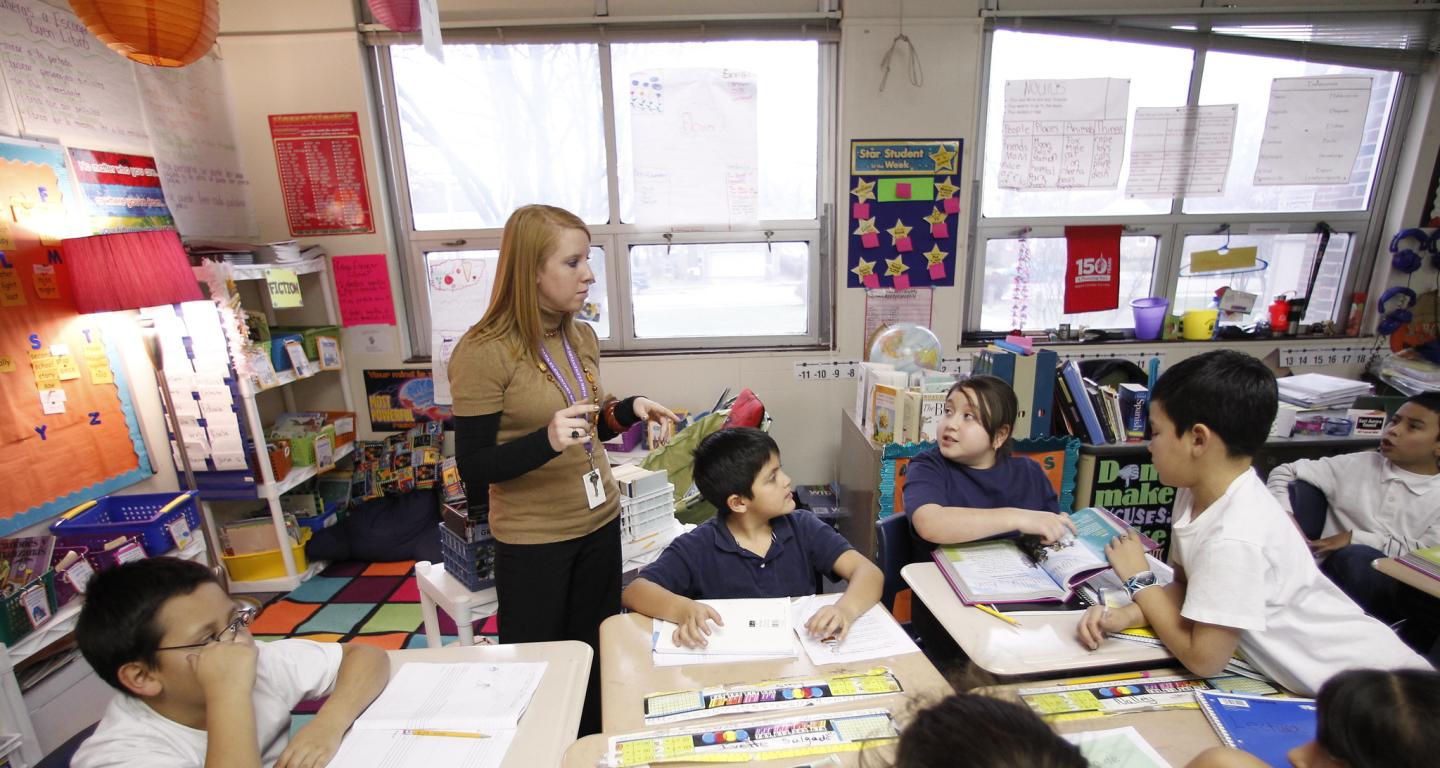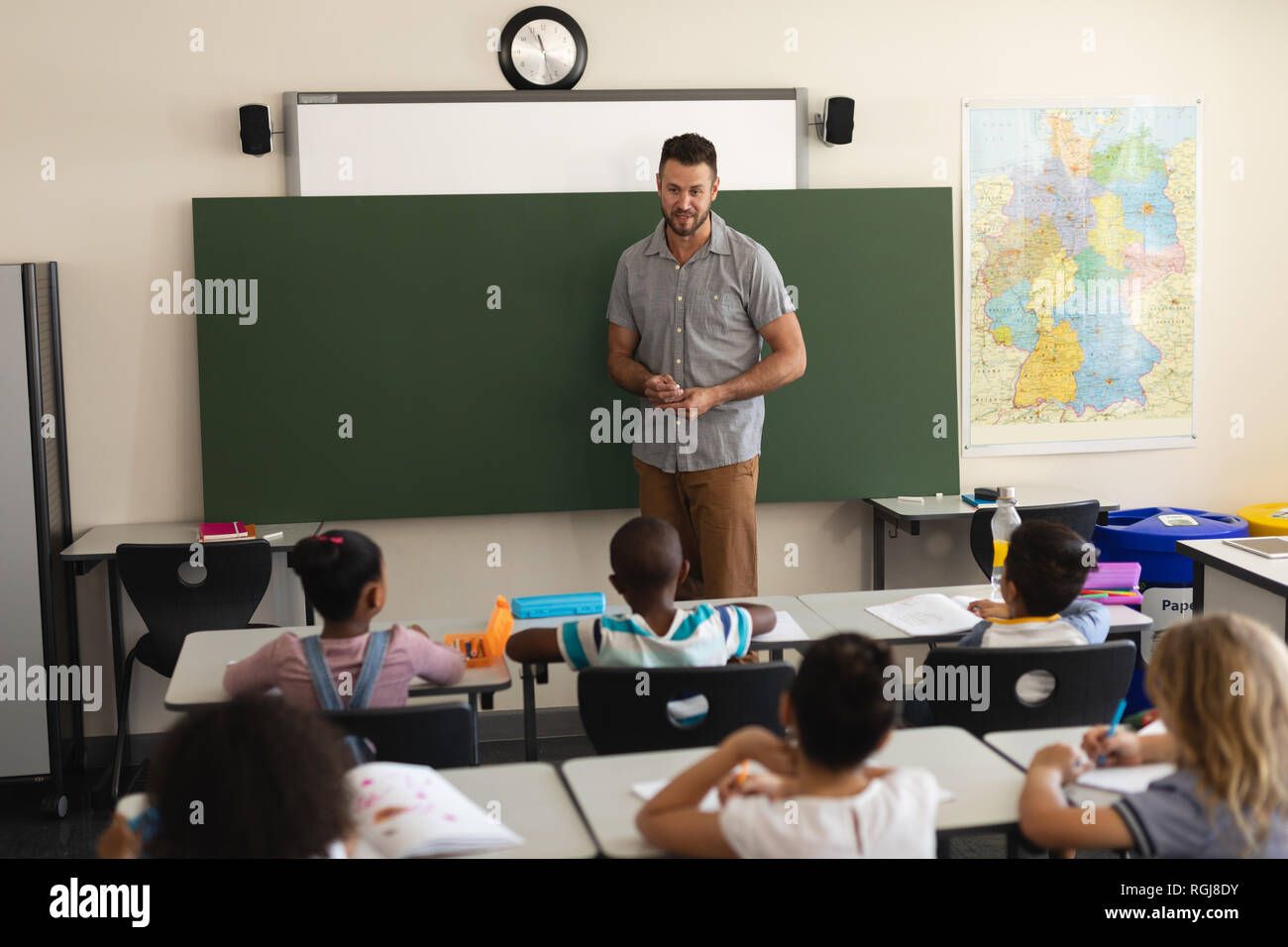A Comprehensive Guide to the Different Discovering Methods in Primary Science Instruction
The expedition of diverse understanding methods in key science direction provides a chance for instructors to enhance pupil interaction and comprehension significantly. By taking a look at hands-on learning techniques, inquiry-based techniques, and collective methods, we can recognize effective methods that provide to various finding out styles.

Hands-On Learning Methods
Hands-on learning strategies play a crucial duty in primary scientific research guideline, involving students in active expedition and testing. These techniques enable students to communicate directly with materials and sensations, promoting a deeper understanding of scientific principles. By utilizing manipulatives, models, and real-life experiments, educators create an atmosphere where students can observe, assume, and test their ideas.
Such strategies not just enhance understanding but also cultivate crucial thinking and analytical skills. When trainees take part in activities like constructing straightforward makers, growing seeds, or carrying out chemical reactions, they are encouraged to ask inquiries and seek solutions through their own observations. This experiential technique assists to debunk complicated scientific concepts, making them extra obtainable and relatable.
In addition, hands-on discovering promotes collaboration among peers, as trainees commonly operate in teams to perform experiments or share findings. This teamwork not only enriches their knowing experience yet likewise develops vital social skills. Eventually, integrating hands-on techniques in key science direction cultivates a long-lasting love of discovering and inquisitiveness concerning the environment, laying a solid structure for future academic searches in scientific research and beyond.
Inquiry-Based Understanding
Inquiry-based learning is an educational strategy that motivates trainees to ask questions, check out phenomena, and build their own understanding of clinical ideas. This technique changes the focus from conventional teacher-led direction to an extra student-centered experience, where learners take the campaign in their academic journey. By cultivating inquisitiveness, inquiry-based understanding advertises much deeper involvement with the material, enabling students to explore topics in a purposeful context.
In practice, this method often entails hands-on experiments, monitorings, and critical reasoning tasks that line up very closely with the clinical technique. Trainees are encouraged to create theories, layout examinations, and examine information, which grows important skills such as logical and analytical thinking. The function of the teacher in this framework is to assist in expedition, directing students through the inquiry procedure while encouraging independent idea and cooperation.
In addition, inquiry-based knowing supports a feeling of ownership over the knowing process, motivating students to go after knowledge proactively. This approach not just boosts understanding of scientific principles however additionally cultivates a long-lasting love for knowing, equipping students with the skills necessary to navigate an increasingly complicated world.
Collaborative Understanding Approaches
Joint knowing approaches equip trainees to involve in meaningful communications with peers, fostering a common obligation for their educational outcomes. In key science direction, these approaches motivate students to interact to check out scientific ideas, solve problems, and perform experiments (primary science tuition Singapore). By participating in team activities, students can take advantage of diverse point of views, enabling richer understanding and retention of clinical expertise
One trick facet of joint discovering is the focus on interaction skills. Students should express their ideas, pay attention actively to others, and work out ideas, every one of which are critical proficiencies in both real-world and scholastic contexts. This social communication not just boosts their understanding of scientific concepts yet additionally advertises teamwork and conflict resolution skills.
When students see the value of their payments within a team, they are a lot more most likely to take ownership of their understanding journey. Overall, incorporating joint knowing techniques in primary scientific research instruction grows a vibrant knowing setting that prepares pupils for future scholastic and social obstacles.
Technology Assimilation in Science
The integration of modern technology in key scientific research direction improves learning experiences by giving cutting-edge devices and sources that support numerous teaching methodologies, including collaborative knowing - primary Check Out Your URL science tuition Singapore. Making use of electronic platforms, simulations, and interactive applications permits trainees to engage deeply with scientific concepts, facilitating a more hands-on strategy to learning
Online labs, for circumstances, enable students to perform experiments safely and effectively, promoting inquiry-based understanding. These tools can mimic real-world scientific circumstances, permitting students to imagine intricate procedures that would be hard to reproduce in a typical classroom setting. Moreover, innovation promotes interaction and cooperation amongst pupils, as they can share searchings for and interact on jobs via on-line systems.
Furthermore, multimedia discussions and academic video clips can improve lessons by satisfying diverse knowing designs, making abstract ideas extra accessible. Data evaluation devices likewise encourage students to collect and analyze clinical data, enhancing essential thinking skills. Overall, the calculated consolidation of modern technology in key science instruction not just boosts engagement yet also prepares pupils for a technologically advanced society, equipping them with crucial skills for future clinical undertakings.
Distinguished Direction Strategies
Distinguished guideline approaches are essential for attending to the diverse needs of learners in primary scientific research education and learning. These methods enable teachers to customize their teaching techniques to accommodate differing abilities, rate of interests, and discovering designs within the classroom. By using separated direction, teachers can develop an inclusive atmosphere that promotes interaction and enhances understanding of scientific ideas.
One efficient approach is to utilize adaptable grouping, which permits pupils to work together with peers at similar ability degrees or with varying viewpoints. This method encourages peer learning and promotes crucial thinking. Additionally, providing choices in projects can empower pupils, allowing them to choose projects that resonate with their passions while still satisfying curricular purposes.
Additionally, including tiered jobs is an additional important technique. Deliberately jobs with varying levels of complexity, teachers can make sure that all students are properly tested, no matter their effectiveness. Utilizing developmental analyses to assess comprehending further allows teachers to adjust their training techniques dynamically, making sure that each learner receives the assistance they require.
Inevitably, executing distinguished direction approaches in main science education and learning not only boosts trainee discovering outcomes yet additionally grows an enthusiasm for science, preparing anonymous trainees for future academic quests.

Conclusion
In recap, reliable primary science instruction demands a multifaceted technique that includes hands-on knowing, inquiry-based methods, and collaborative techniques. The combination of innovation and differentiated guideline additionally provides to varied discovering styles, promoting a setting conducive to exploration and critical thinking.
The exploration of diverse learning techniques in key science direction provides a possibility for teachers to boost trainee involvement and comprehension substantially.Hands-on knowing strategies play an essential role in key science instruction, involving trainees in energetic expedition and experimentation.Inquiry-based learning is an educational method that encourages pupils to ask inquiries, investigate phenomena, and build their very own understanding of clinical principles.Joint learning approaches equip pupils to involve in significant communications with peers, promoting a common duty for their educational end results. Generally, incorporating collaborative knowing why not try these out methods in key science instruction cultivates a vibrant understanding environment that prepares trainees for future scholastic and social obstacles.